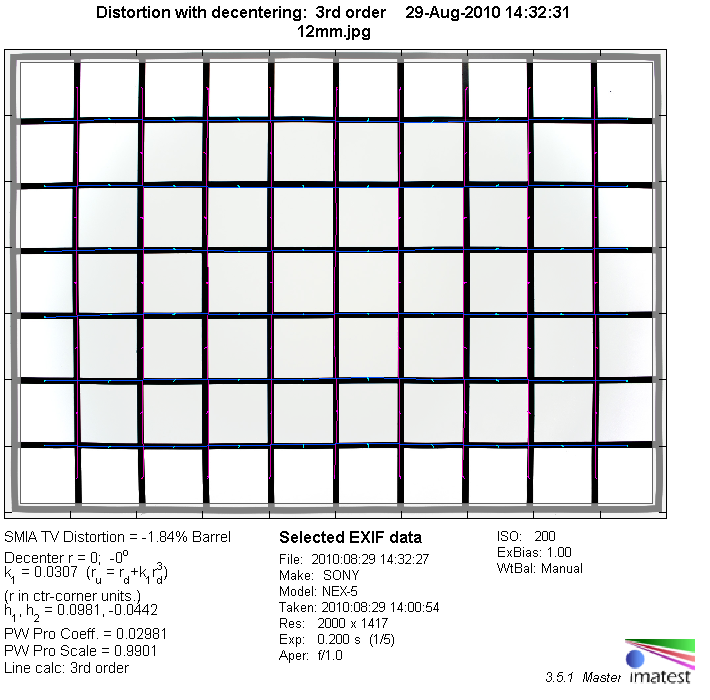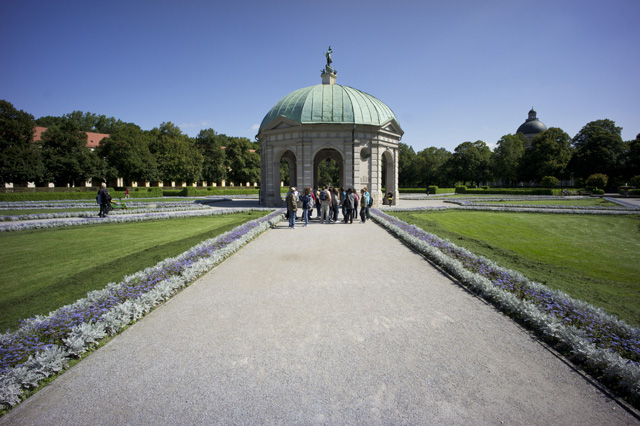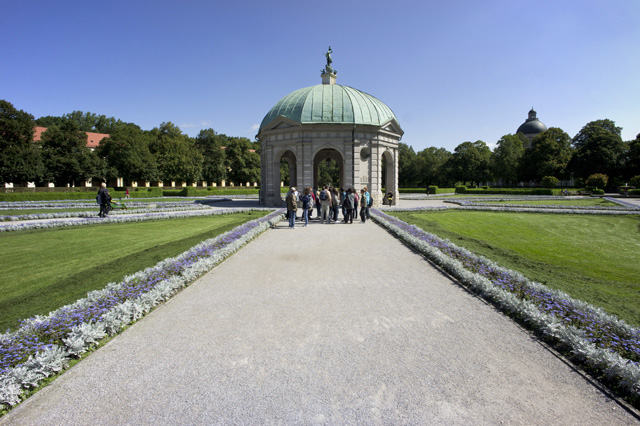|
Voigtlander Ultra-Wide Heliar 12mm f/5.6 Aspherical II on Sony NEX - Review / Lens Test Report - Analysis |
|
Lens Reviews -
Sony Alpha/NEX (APS-C)
|
|
Page 2 of 3

Distortion
The Heliar 12mm f/5.6 produces a comparatively low degree of barrel distortion on the E-system. At roughly ~1.5% this may be visible in critical scenes but we've seen a lot worse from other ultra-wide lenses here - especially from zoom lenses.

Vignetting
The Voigtländer lens is a relatively old design optimized for film use. This is most obvious with respect to light falloff in the image corners which can reaches ~2EV (f-stops) at all apertures - despite the APS-C testing scope. This is roughly one stop worse compared to digitally optimized designs. You can, of course, correct the problem during post-processing but only at cost of higher sensor noise in the image corners.

MTF (resolution)
The resolution characteristic of the Heliar is quite decent albeit not stellar. The center resolution can certainly compete with the very best lenses out there but the border and corner performance is merely "good" across the tested aperture range. However, ultra-wide lenses are rarely tack sharp here anyway.
The lens showed a bit of field curvature. The centering quality of the tested sample was Okayish at f/5.6 but the problem disappeared at f/8 already.
Please note that the MTF results are not directly comparable across the different systems!
Below is a simplified summary of the formal findings. The chart shows line widths per picture height (LW/PH) which can be taken as a measure for sharpness.
If you want to know more about the MTF50 figures you may check out the corresponding Imatest Explanations
Chromatic Aberrations (CAs)
Lateral CAs (color shadows at harsh contrast transitions) is very well controlled at around 1px on the average at the image borders. This may be noticable upon 100% magnification but it's basically a non-issue in prints and a very low figure for a such a lens anyway.

Vignetting and Color Shift
"Classic" rangefinder lenses used on digital camera tend to produce a color shift in the image corners. This is a major problem on the Leica M8/M9 due to their bigger (APS-H/full-format) but the issue isn't quite as pronounced on the APS-C sensor of the NEX cameras - at least for the Heliar 12mm. Nonetheless the shift can be noticed at times but it can be resolved fairly easily (along with the light-falloff) during post-processing e.g. in Photoshop ... if that's an option for you. All it takes is an image mask - from here on the solution is just a mouse-click away.
How to create a correction mask:
1. look for a uniform white or gray plane and apply manual WB on this plane
2. take an image with ~1 f-stop exposure compensation
3. create a 2nd image and fill it with the gray value from the very center of the first image
4. overlay both images using "divide" overlay mode - that's your mask - it's basically white in the center and dark in the corners. You may save it for future use.
5. overlay your real world image with this mask and choose "divide" again.
6. done.
Alternatively you may try "CornerFix" over at SourceForge.org.
Here's the result ...
Original Image:
 |
Corrected Image:
 |
|